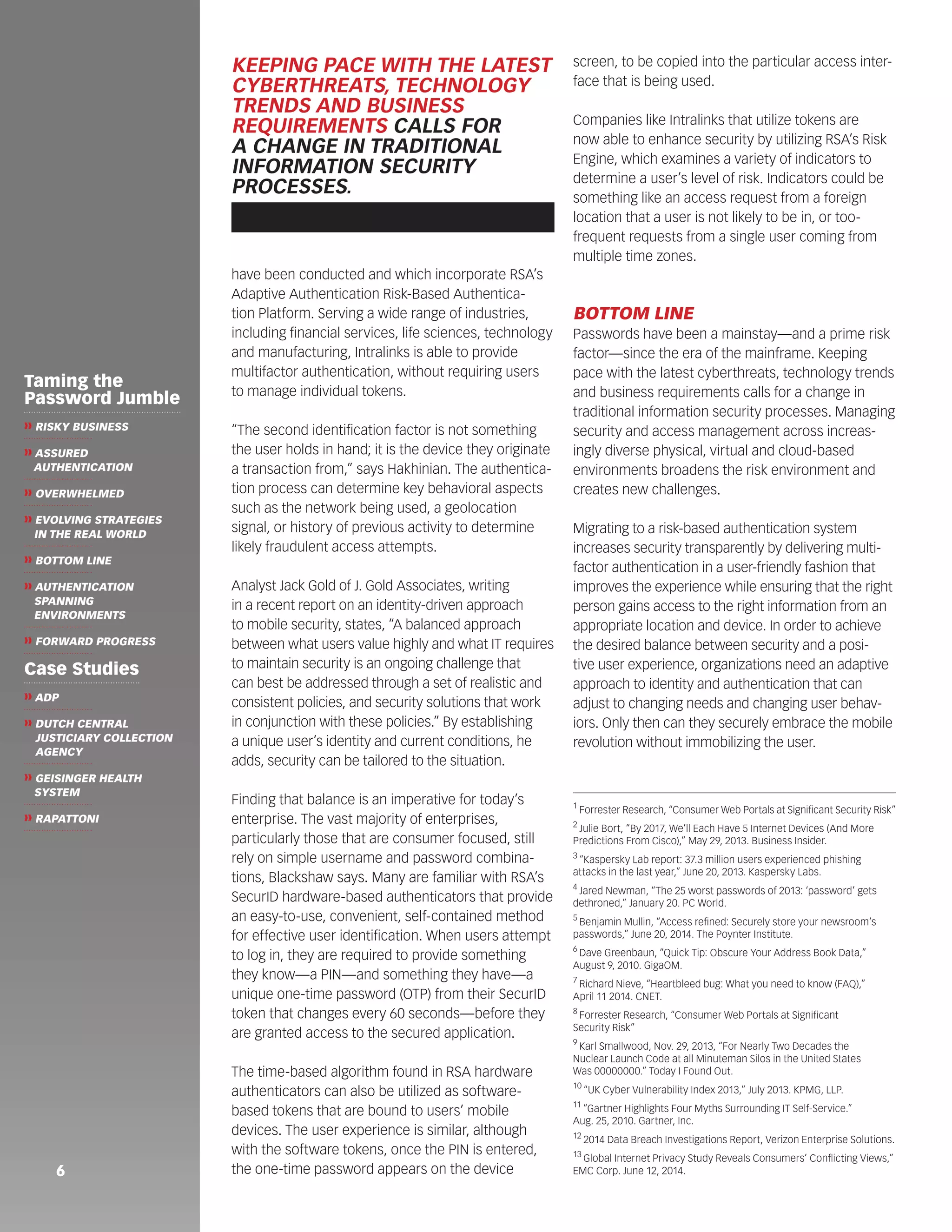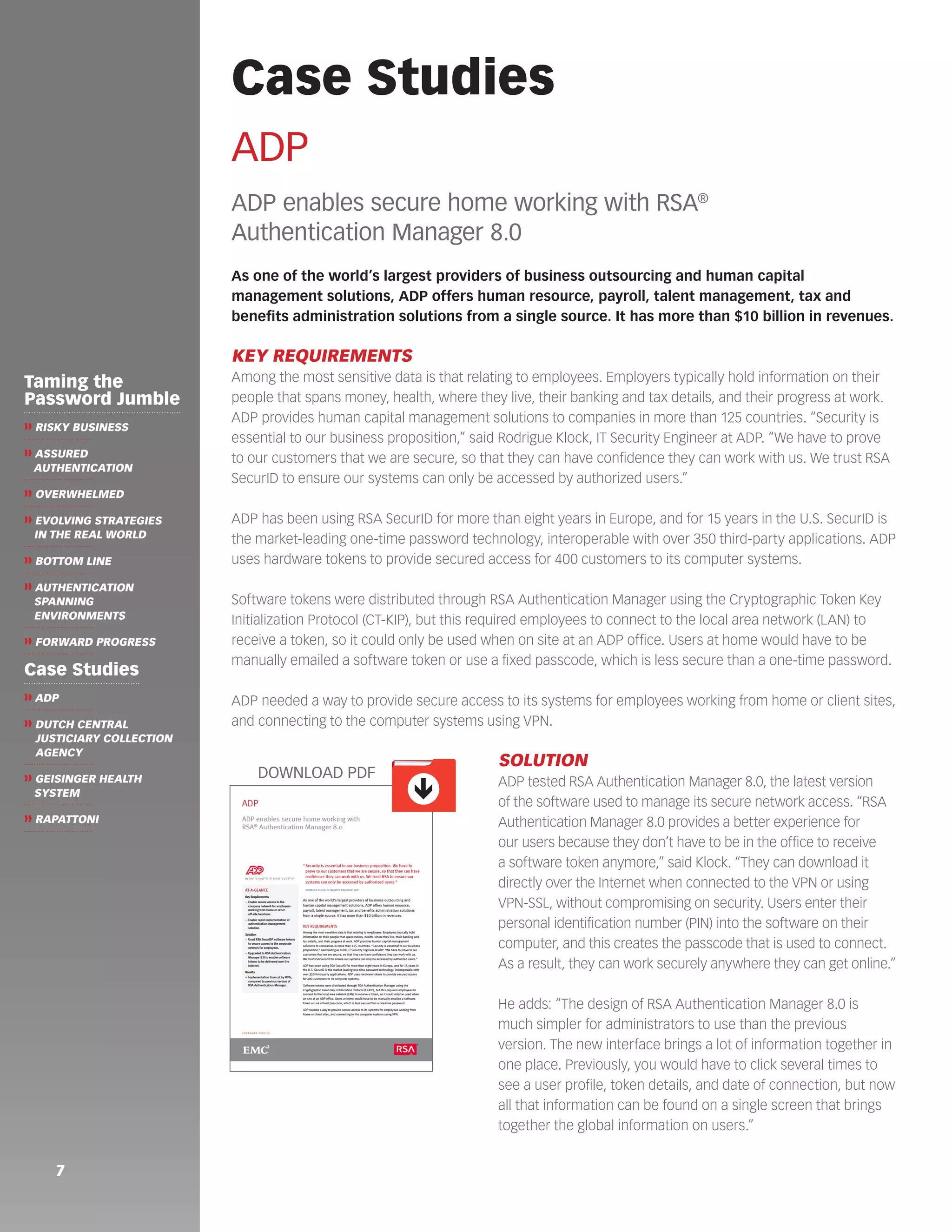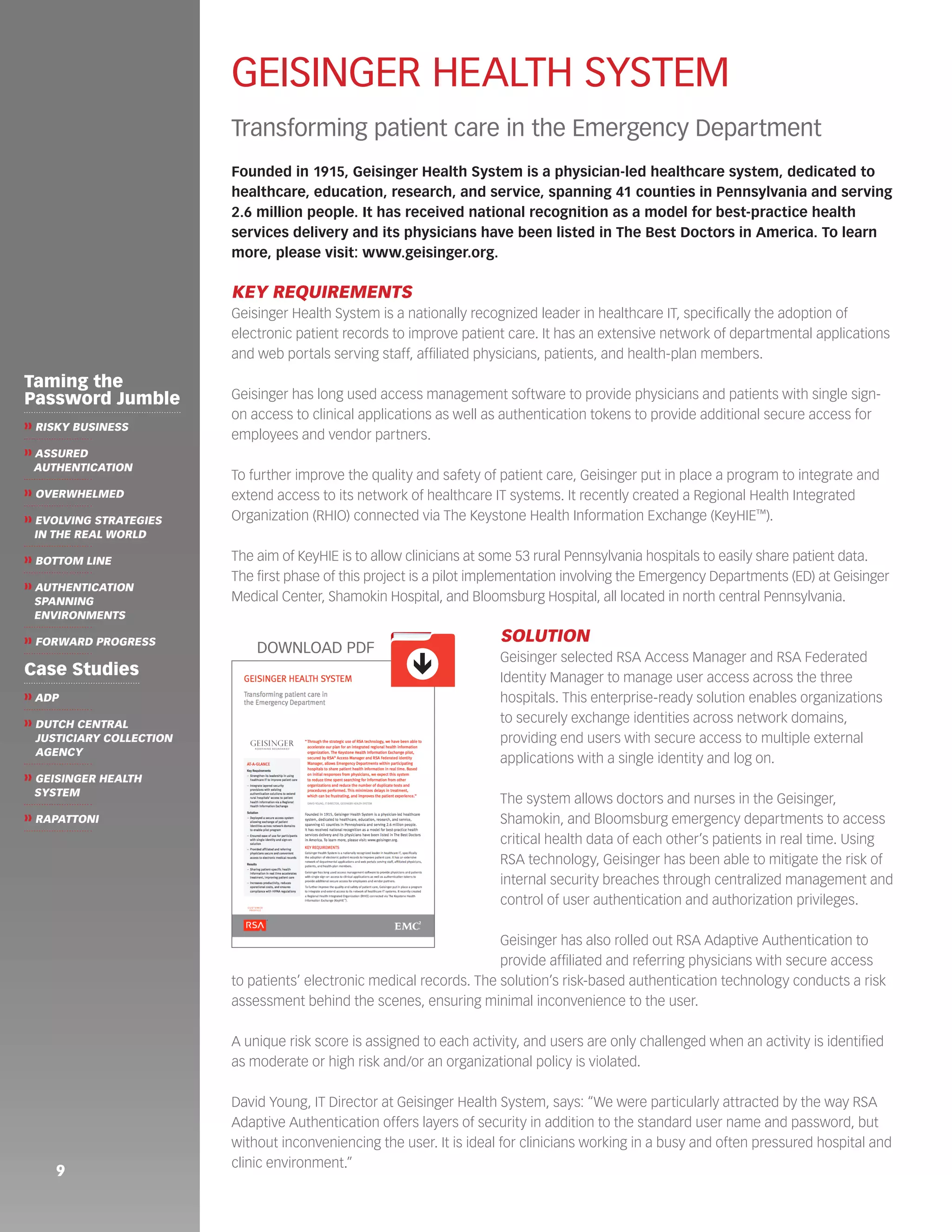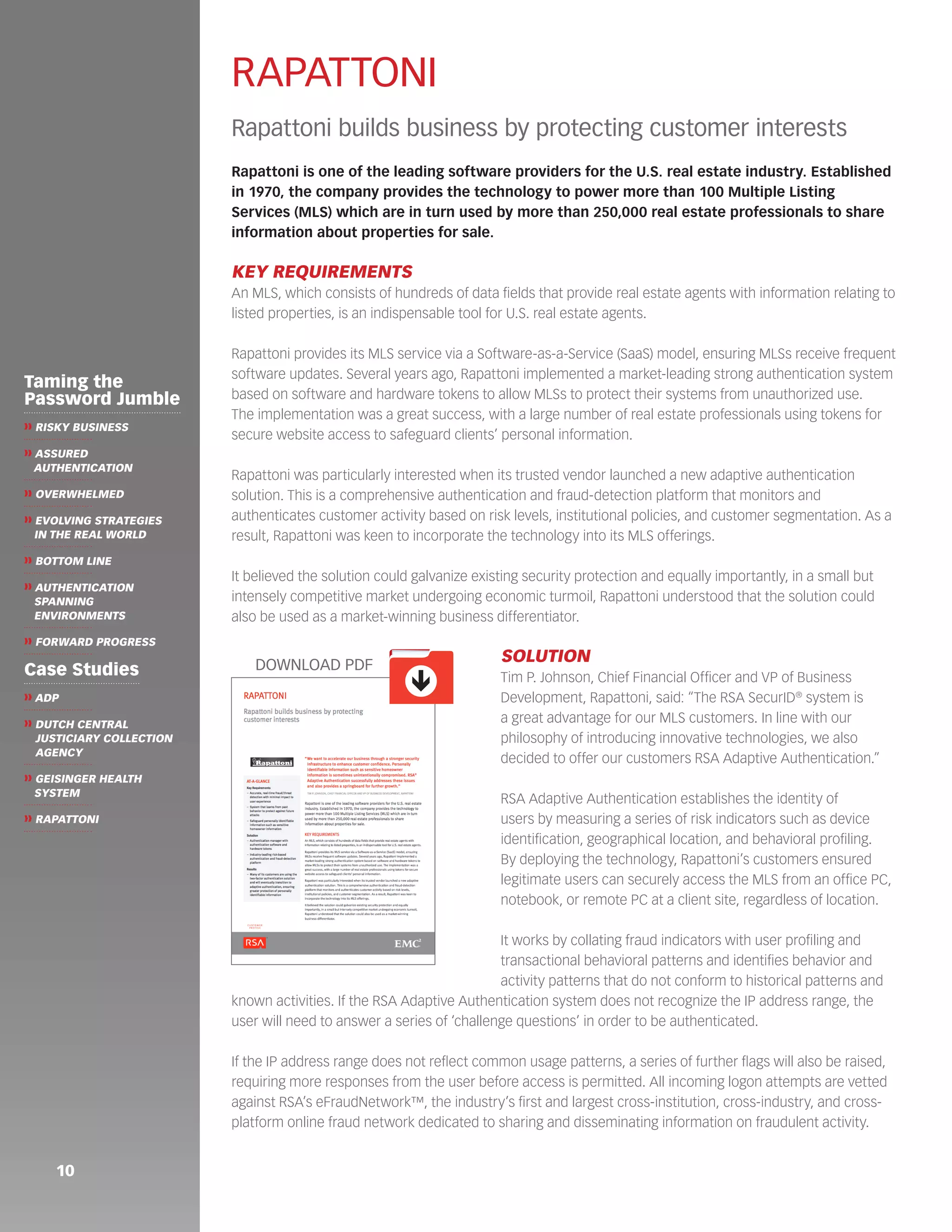The document discusses the growing challenges in digital and mobile user authentication caused by increasing numbers of websites and user accounts, leading to password proliferation and security vulnerabilities. It highlights the need for enterprises to develop more sophisticated authentication strategies, as traditional methods are often inadequate and risky in the evolving landscape that includes mobile and cloud technologies. The text explores various solutions and case studies aimed at improving security while balancing user convenience and operational efficiency.
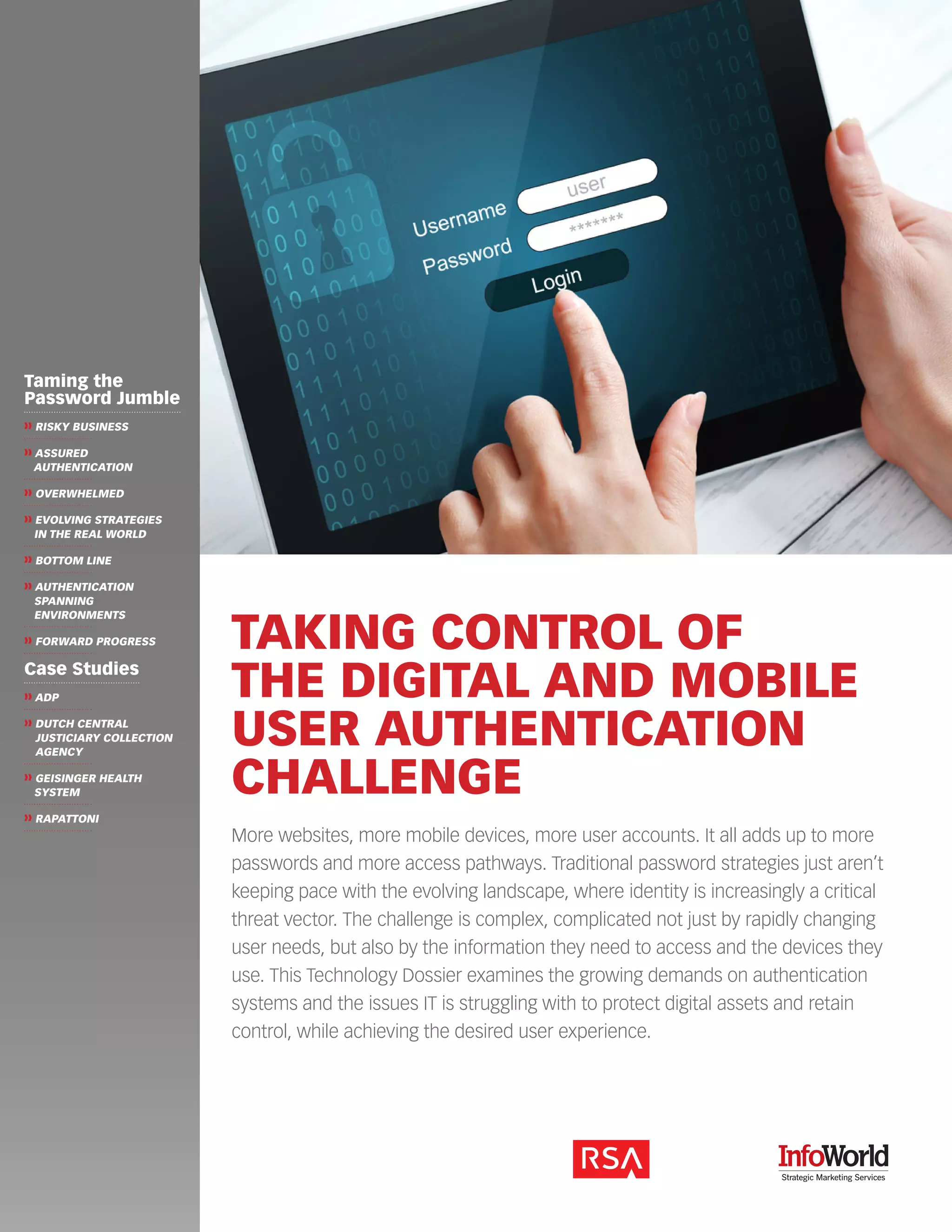
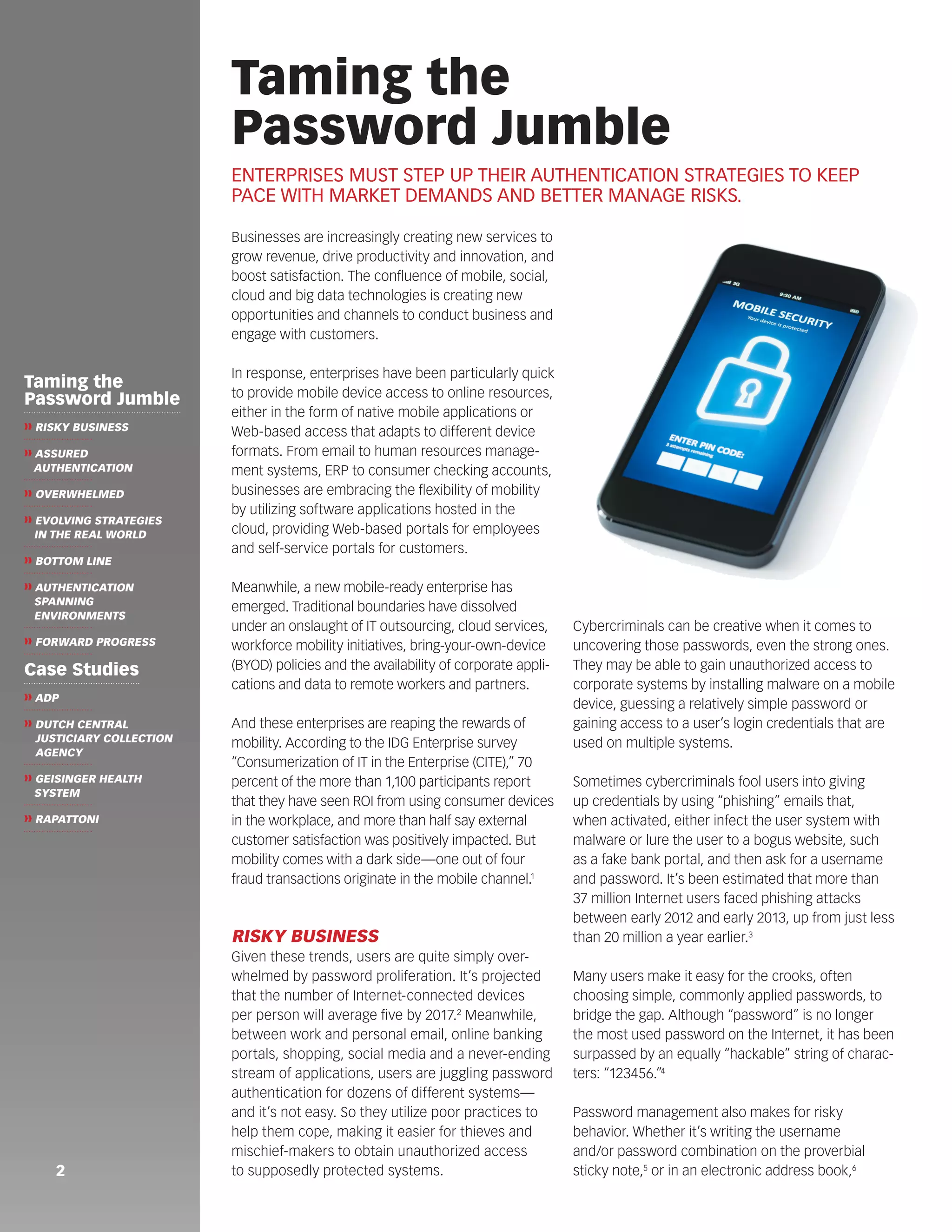

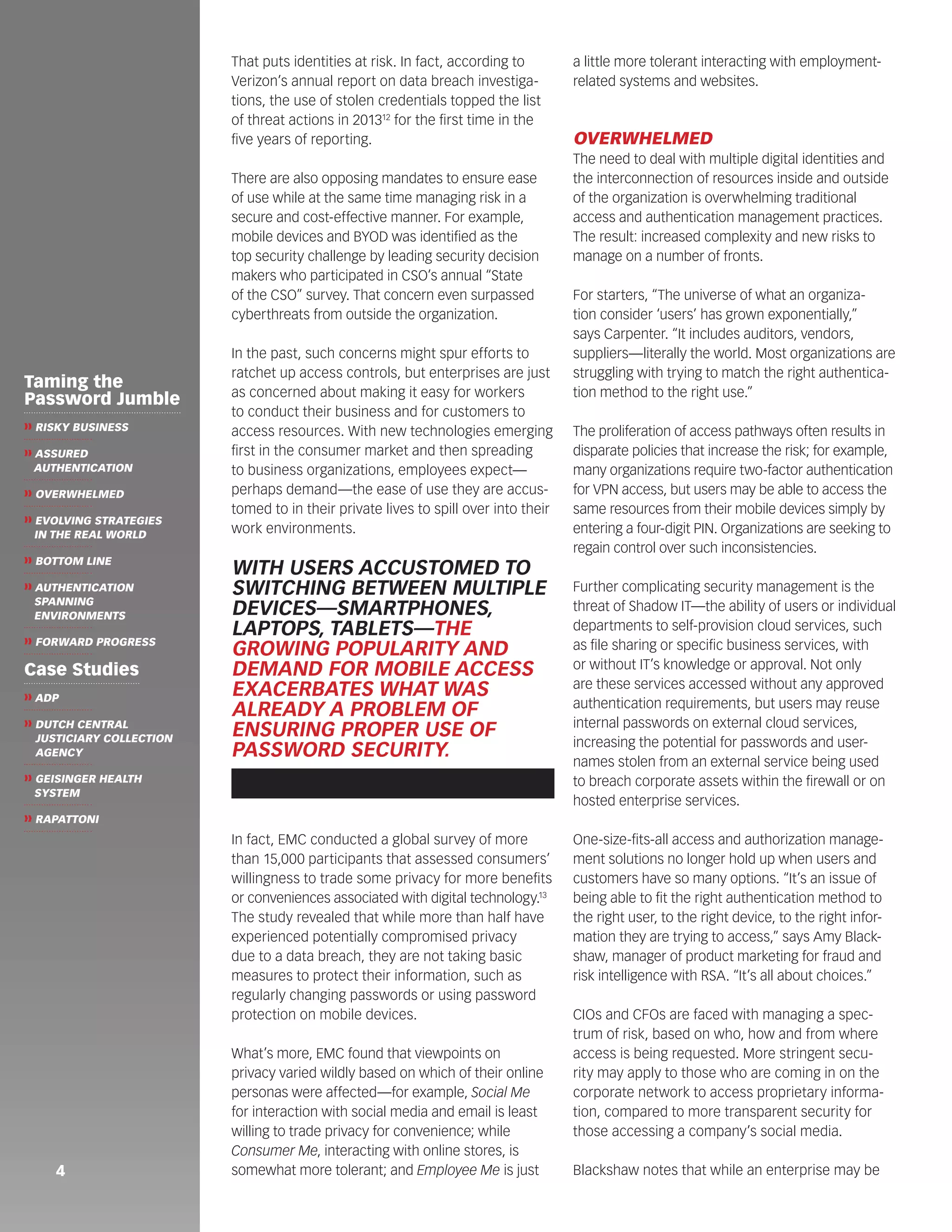
![able to exert more stringent controls over workers,
it may not have much influence with consumers
who resist added friction in their online activities.
“Unlike employees, consumers can vote with their
feet and seek out other service providers [that]
they view as easier to deal with,” she says. Banks,
for example, are struggling with the issue of how
to provide consumer ease of access while ensuring
security and confidentiality of their accounts. Simi-larly,
healthcare organizations are rapidly rolling out
patient portals while attempting to make authenti-cation
seamless and transparent.
EVOLVING STRATEGIES IN THE
REAL WORLD
IT must develop authentication strategies that
evolve with market changes. “If an employee
at work can’t share photos or documents with
acquaintances, they will find a way to send them
through consumer-grade software that they like and
are used to,” says Mushegh Hakhinian, lead security
architect at Intralinks.
Intralinks provides strategic collaboration solutions
on which more than $23 trillion in transactions
FORWARD PROGRESS
KAYVAN ALIKHANI
Senior Director of Technology at RSA focusing on mobility
Q. It seems that virtually everybody is unhappy with today’s
password-dependent authentication schemes, so what is RSA’s
forward-looking, next-generation vision for resolving this?
A. The future is truly about choice and providing secure authentication
that makes it easy for users to comply with security policies. In the
past, biometrics wasn’t very convenient, and proved very expensive. Now cost-effective technologies
built into mobile devices, such as the camera, speaker, accelerometer, fingerprint sensor and geoloca-tion,
can enhance authentication with behavior metrics based on the activities of the user, enabling
a more convenient experience. Potential user authentication technologies include fingerprint, face
or voice print, iris structures, ear shape, heartbeat analysis as well as activities such as keystroke
analysis and handwriting.
Q. How does behavior metrics differ from biometrics?
A. It’s all about utilizing what a person is doing—tied with their mobile device—to better prove that
they are who they say they are. With behavior metrics, you can look at who your users are, what
they are trying to access, and where they are trying to access it. You need to have an ecosystem
to deliver different controls based on those three groups, and flexibility for users. For example,
in a dark room the smartphone camera is not going to “pick up” the face; in a loud subway, voice
recognition probably won’t work; in police, fire and health vehicles where gloves are often worn,
fingerprint sensor is not optimal. So you need options, almost like a menu, to give users choices.
Even when people type onto their device or laptop keyboard, they have a specific signature based
on velocities, rhythms and pressure. If you identify these factors passively, you get very rich indica-tors
that enable frictionless authentication.
Q. So how do we get from here to there, and what is it going to cost?
A. Whether we realize it or not, what we’re going through here is the death of passwords. RSA’s vision
is to evolve technology to meet the changing needs of organizations and protect them as they move
into the realms of cloud, mobile, social and big data. It requires an organization with the ongoing vision
and an ecosystem of partnerships that implies protocols and standards, not another point solution
vendor that can provide the cheapest option. With cloud, for example, all of these organizations are
going to be communicating, authenticating and cross authenticating, so you have to have protocols
and standards to make that happen.
Organizations want something that is cheap to deploy, that is convenient to users and will protect
all their information. Of course, that doesn’t exist. You have information and you don’t want that
circulating freely on the Internet, so there is a value to protecting that information.
5
Taming the
Password Jumble
❱❱ RISKY BUSINESS
❱❱ ASSURED
AUTHENTICATION
❱❱ OVERWHELMED
❱❱ EVOLVING STRATEGIES
IN THE REAL WORLD
❱❱ BOTTOM LINE
❱❱ AUTHENTICATION
SPANNING
ENVIRONMENTS
❱❱ FORWARD PROGRESS
Case Studies
❱❱ ADP
❱❱ DUTCH CENTRAL
JUSTICIARY COLLECTION
AGENCY
❱❱ GEISINGER HEALTH
SYSTEM
❱❱ RAPATTONI](https://image.slidesharecdn.com/taking-control-mobile-user-authentication-challenge-141006043640-conversion-gate01/75/Taking-Control-of-the-Digital-and-Mobile-User-Authentication-Challenge-5-2048.jpg)
